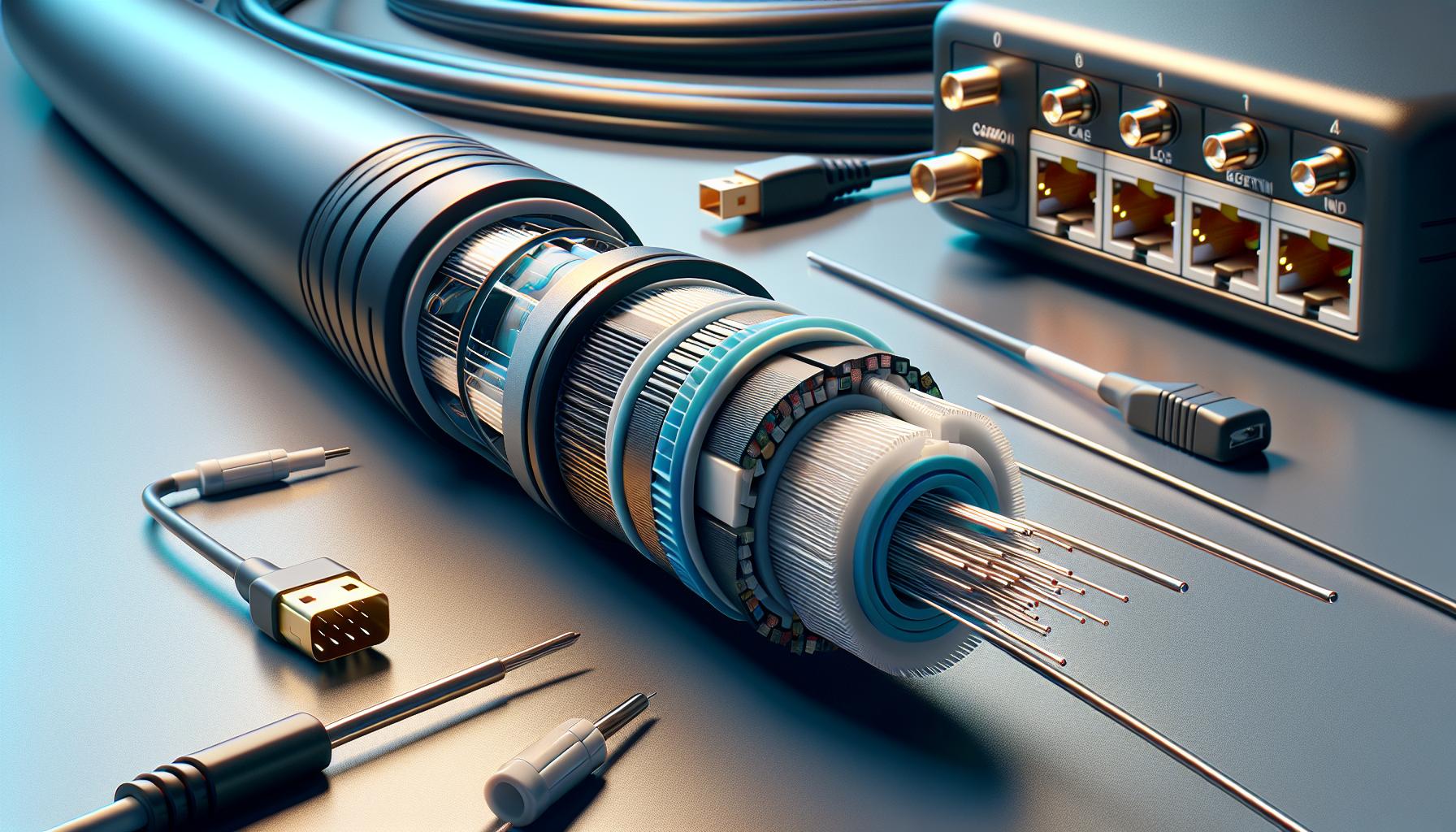Coaxial cables play a crucial role in modern communication systems, connecting devices to transmit data effectively. Understanding what a coax cable does can improve one’s appreciation of how internet, television, and other services function seamlessly. This article explores the purpose of coax cables, their design, and why they matter in today’s tech-driven world.
Overview of Coaxial Cables
Coaxial cables serve as vital components in communication networks, enabling data transmission for television, internet, and telephony systems. These cables consist of a central conductor, insulating material, a metallic shield, and an outer jacket. Each layer plays a role in protecting the signal, minimizing interference, and ensuring quality transmission.
Coaxial cables carry signals through their copper core, which transmits electrical signals effectively. Surrounding this core, the insulation prevents signal loss while the metallic shield acts as a barrier against electromagnetic interference. The outer jacket protects the cable from physical damage and environmental factors.
Different types of coaxial cables exist, such as RG-6, RG-59, and RG-11. Each type varies in terms of thickness, frequency range, and application. For instance, RG-6 is commonly used for cable television and satellite internet because of its lower attenuation at high frequencies. RG-59 may suffice for short distances, while RG-11 is suitable for long runs due to its sturdiness.
For those in need of high-quality, customized coaxial cables, Cloom Tech custom coax cable provides industry-leading solutions tailored to specific applications.
Functionality of Coaxial Cables

Coaxial cables are integral to effective communication systems. They play a vital role in transporting data, audio, and video signals efficiently. Their structure ensures reliable transmission with minimal loss.
Signal Transmission
Coaxial cables transmit signals through a central conductor, which carries the electrical impulses. The insulating layer surrounding the conductor prevents short circuits and minimizes signal degradation. The metallic shield eliminates external electromagnetic interference, enhancing the signal integrity. This design enables coaxial cables to support high-frequency transmissions, making them suitable for applications like cable television and high-speed internet.
Reduced Interference
Coaxial cables significantly reduce interference from external sources. The braided or foil shield protects against electromagnetic interference (EMI) and radio frequency interference (RFI). This shielding ensures that the signals remain clear and stable during transmission, which is crucial for maintaining high-quality audio and video experiences. The effectiveness of this shielding allows coaxial cables to function effectively in environments with multiple electronic devices.
Types of Coaxial Cables
Coaxial cables come in several types, each designed to meet specific needs and applications. Understanding these types can help in selecting the right cable for various communication tasks.
RG-6 Coaxial Cable
RG-6 is a widely used coaxial cable known for its ability to handle high-frequency signals. It features a thicker outer conductor and better insulation compared to RG-59. This design reduces attenuation, making it suitable for cable television, satellite systems, and high-speed internet connections. RG-6 cables effectively limit interference, ensuring a stable signal over long distances. Their composition typically includes at least 18 AWG (American Wire Gauge) center conductors and a solid or foam dielectric for enhanced performance.
RG-59 Coaxial Cable
RG-59 is lighter and more flexible than RG-6, making it ideal for applications that require shorter runs and tighter spaces. This coaxial cable is commonly used for analog video signals and CCTV installations. While RG-59 can transmit signals effectively over short distances, its higher attenuation limits its performance for high-frequency applications. The typical construction includes a 20 AWG center conductor and a thicker dielectric core compared to RG-6, yet it lacks the shielding efficiency that RG-6 offers for minimizing interference.
Applications of Coaxial Cables
Coaxial cables play a vital role in numerous applications, particularly in television broadcasting and internet connections.
Television Broadcasting
Coaxial cables are essential for television broadcasting. They convey audio and video signals from service providers to televisions in homes. RG-6 cables are predominantly used due to their ability to handle high-frequency signals with minimal signal loss. This capability ensures clear picture quality and stable reception, contributing significantly to viewers’ overall experience. In addition, coaxial cables provide a reliable connection for cable TV services, satellite systems, and even over-the-air digital broadcasts, allowing users to access a variety of channels without interruption.
Internet Connections
Coaxial cables facilitate high-speed internet connections. They connect cable modems to service providers, transmitting data efficiently and maintaining stable connectivity. RG-6 is often preferred in this context for its lower signal attenuation over longer distances, ensuring high-speed access with dependable performance. Coaxial cables are instrumental in supporting broadband services, allowing multiple devices to access the internet simultaneously without degrading speed or quality. Their design minimizes external interference, further supporting fast and reliable internet service delivery.
Conclusion
Coaxial cables play a crucial role in ensuring effective communication in today’s digital landscape. Their unique design allows for reliable transmission of audio, video, and data signals while minimizing interference. With various types available, like RG-6 and RG-59, users can select the right cable for their specific needs, whether it’s for high-definition television or high-speed internet. The importance of coaxial cables can’t be overstated as they improve the quality of services that people rely on daily. By understanding their functionality and applications, individuals can make informed decisions about their communication setups, ensuring optimal performance and connectivity.
Frequently Asked Questions
What are coaxial cables used for?
Coaxial cables are primarily used for transmitting audio, video, and data signals in modern communication systems. They connect devices such as televisions, internet modems, and satellite systems, ensuring reliable and efficient signal transmission.
How do coaxial cables work?
Coaxial cables consist of a central conductor that carries electrical signals, surrounded by insulating material, a metallic shield that reduces interference, and an outer jacket for protection. This design minimizes signal degradation and enhances transmission quality.
What types of coaxial cables are there?
Common types of coaxial cables include RG-6, RG-59, and RG-11. RG-6 is best for high-frequency signals and long distances, RG-59 is suitable for short runs and analog signals, while RG-11 offers low attenuation for extensive cable runs.
Why is RG-6 preferred for cable TV?
RG-6 is favored for cable television due to its thicker outer conductor and superior insulation, which significantly reduces signal loss at high frequencies. This leads to clearer picture quality and stable reception, making it ideal for broadcast applications.
Can coaxial cables be used for internet connections?
Yes, coaxial cables are essential for internet connections, linking cable modems to service providers. RG-6 is often recommended for its low signal attenuation over long distances, supporting high-speed data transmission and multiple device connectivity without quality loss.
